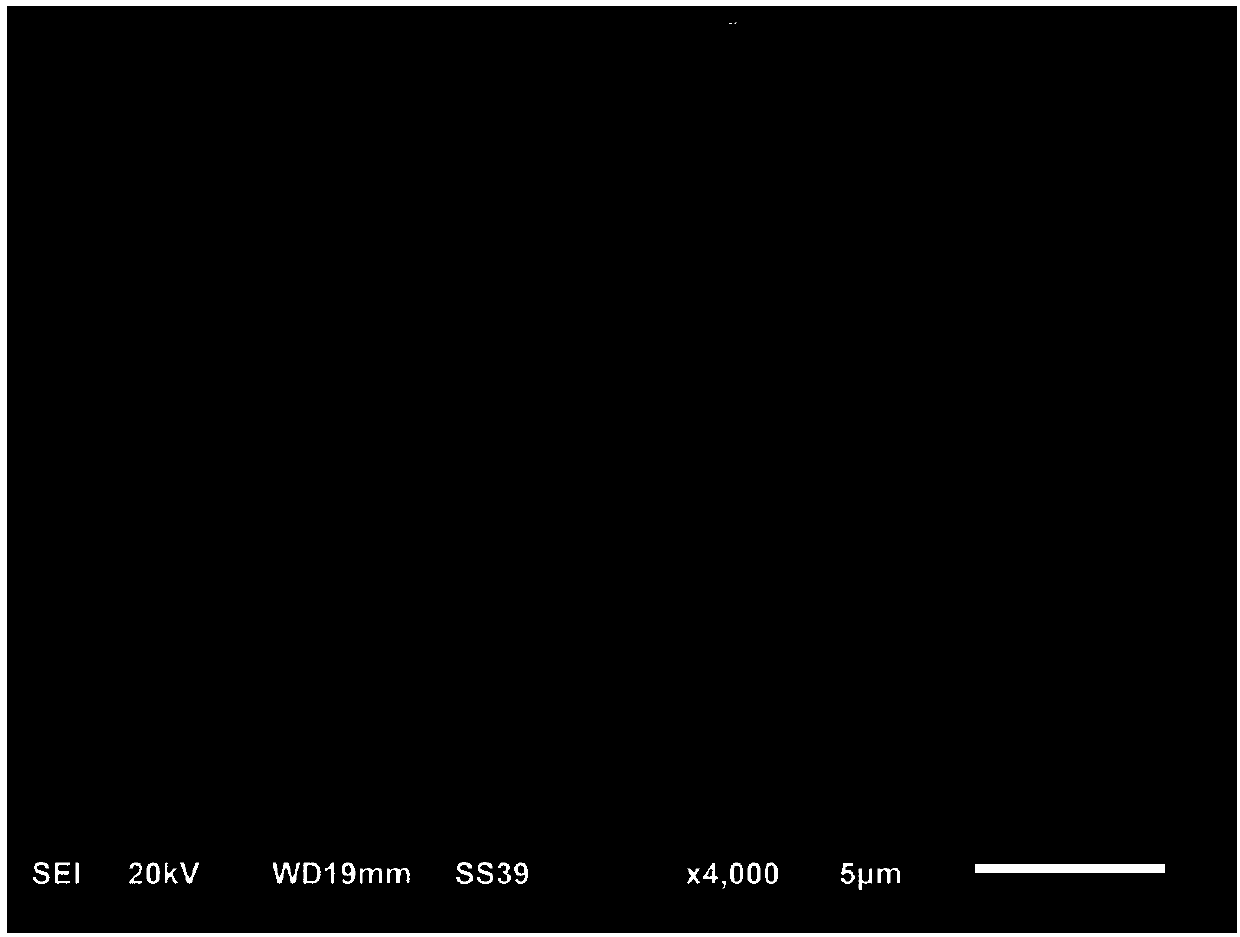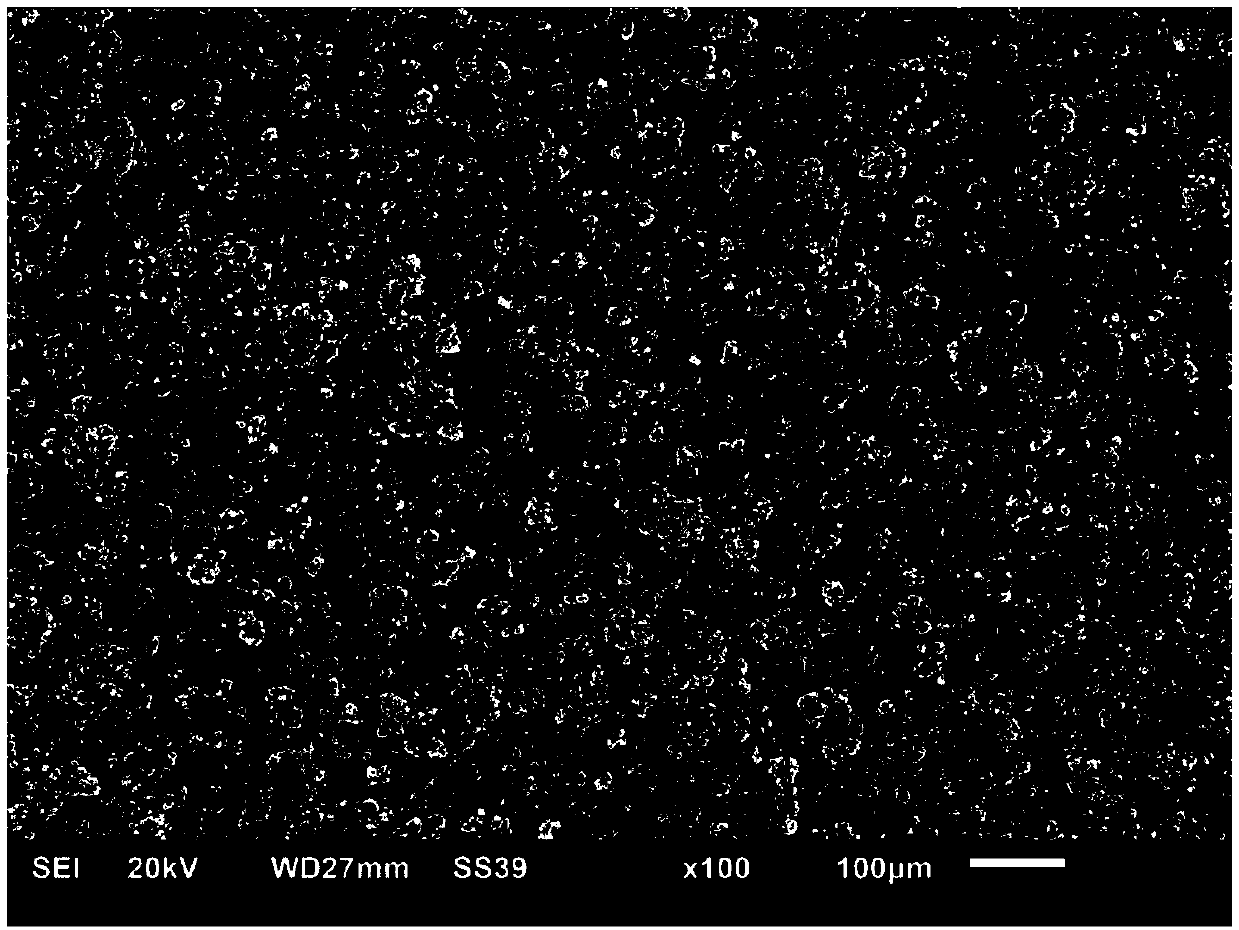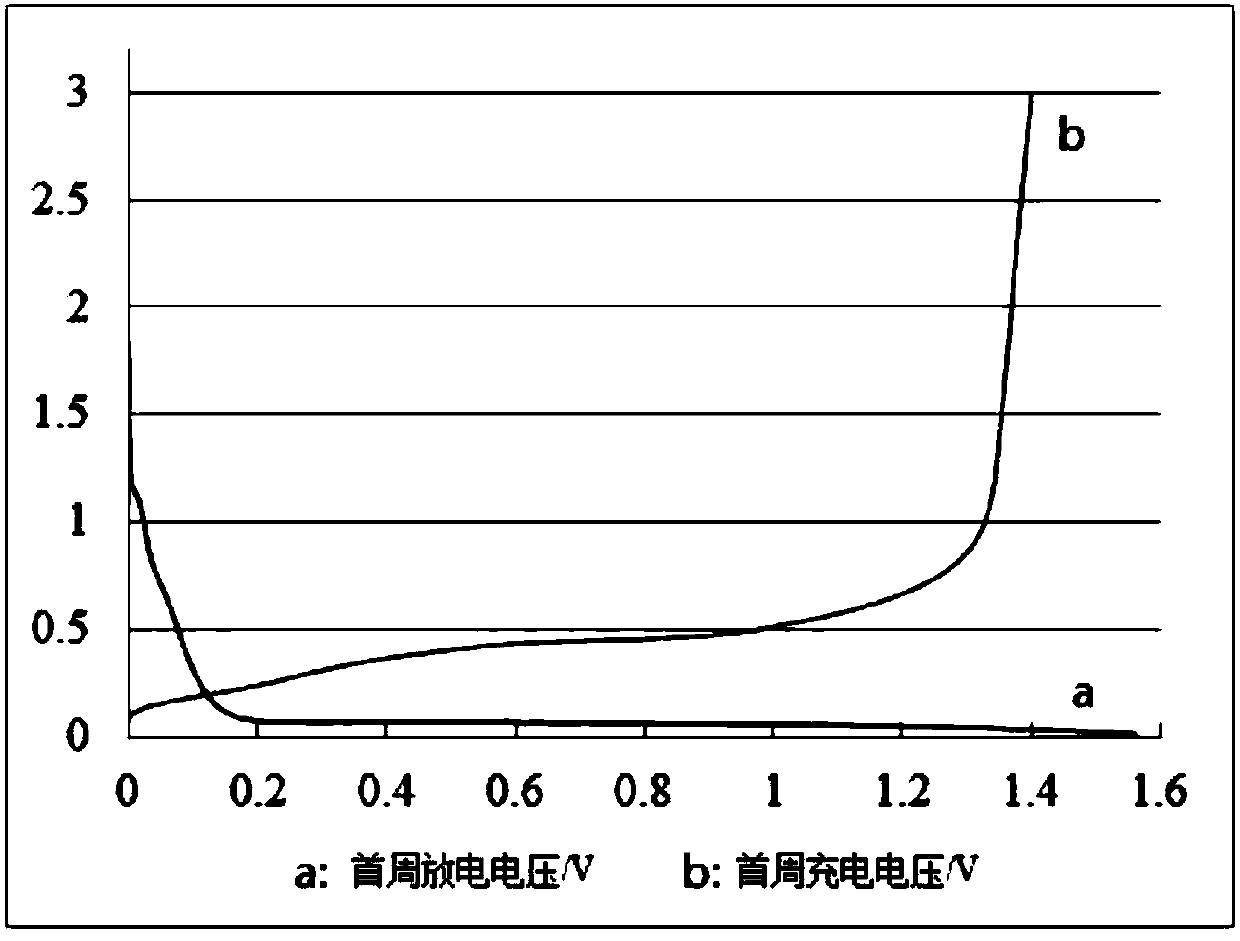Carbon coating treatment method for copper-aluminum-silicon nano alloy material and application of carbon coating treatment method
A processing method and alloy material technology, applied in the direction of electrical components, battery electrodes, circuits, etc., can solve the problems of low first-week efficiency, short cycle life, long charge and discharge time, etc., to meet coating requirements, reasonable particle size distribution, The unique effect of microstructure
- Summary
- Abstract
- Description
- Claims
- Application Information
AI Technical Summary
Problems solved by technology
Method used
Image
Examples
Embodiment 1
[0062] (1) Ingredients of Cu-Al-Si alloy,
[0063] Cut pure copper into φ50mm×100mm rods, pre-treat with pickling and vacuum drying before use, and control the drying temperature at 110±5°C; cut pure aluminum into 50mm×50mm×30mm small aluminum plates, and use acid before use Washing plus vacuum drying pretreatment, the drying temperature is controlled at 200±5°C; the block size of metal silicon is controlled at 5-30mm, pickling before use to remove surface impurities, and then vacuum drying, the drying temperature is controlled at 180± 5°C. The total weight of ingredients is 20Kg, of which by weight: 22-27.5 parts of silicon, 60-70 parts of copper, 0.5-10 parts of aluminum, 0-5 parts of impurities, impurities include: titanium, cobalt, nickel, manganese, iron, boron , phosphorus, carbon, etc., first add part of the silicon, then add copper and aluminum, then add the remaining silicon, and start heating.
[0064] (2) Smelting of Cu-Al-Si alloy:
[0065] Select the technical ...
Embodiment 2
[0087] Example 2, the composition of the copper-aluminum-silicon alloy is in parts by weight: 27.5-32 parts of silicon, 58-63 parts of copper, 1-11 parts of aluminum, 0-5 parts of impurities, molten copper- The furnace temperature of aluminum-silicon alloy is 1550 ± 50 ℃, other steps and methods are basically similar to embodiment 1, Figure 6-10 Shown, the performance of the final product of this embodiment and embodiment 1 is basically the same.
Embodiment 3
[0088] Example 3, the composition of the copper-aluminum-silicon alloy is by weight: 32-39 parts of silicon, 54-59 parts of copper, 1-8 parts of aluminum, 0-5 parts of impurities, molten copper- The outgoing temperature of aluminum-silicon alloy is 1650 ± 50 ℃, other steps and methods are basically similar to embodiment 1, Figure 11-20 Shown, the performance of the final product of this embodiment and embodiment 1 is basically the same.
PUM
| Property | Measurement | Unit |
|---|---|---|
| Particle size | aaaaa | aaaaa |
| Thickness | aaaaa | aaaaa |
Abstract
Description
Claims
Application Information
 Login to View More
Login to View More - R&D
- Intellectual Property
- Life Sciences
- Materials
- Tech Scout
- Unparalleled Data Quality
- Higher Quality Content
- 60% Fewer Hallucinations
Browse by: Latest US Patents, China's latest patents, Technical Efficacy Thesaurus, Application Domain, Technology Topic, Popular Technical Reports.
© 2025 PatSnap. All rights reserved.Legal|Privacy policy|Modern Slavery Act Transparency Statement|Sitemap|About US| Contact US: help@patsnap.com



